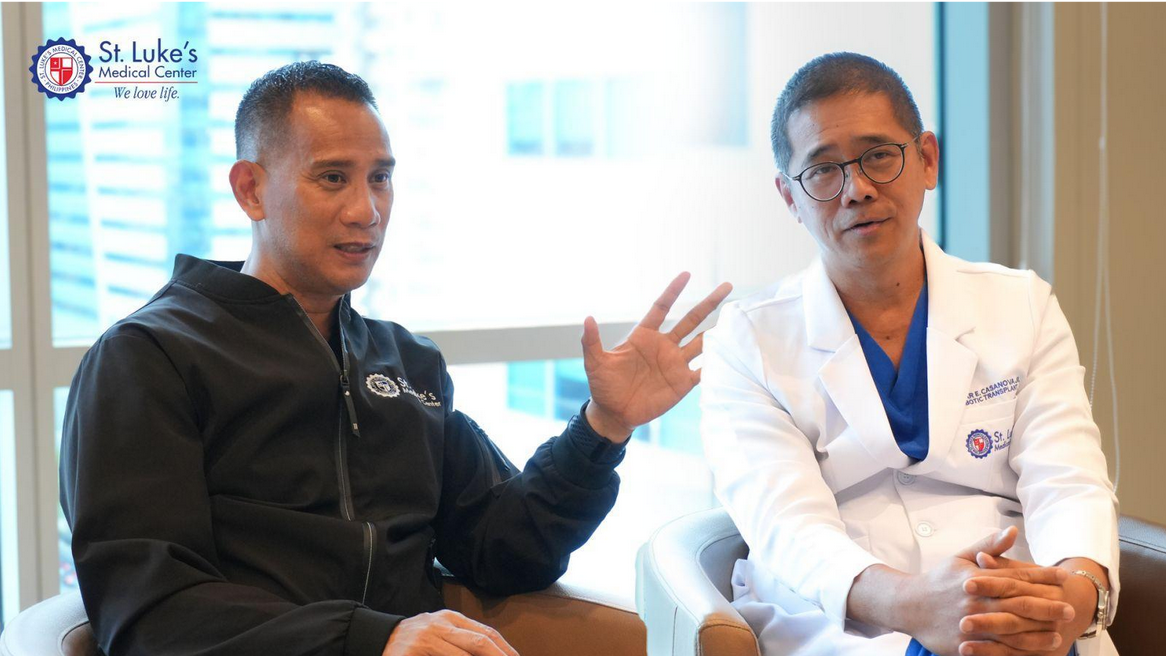The future of transplant is here. How St. Luke’s is pioneering robotic kidney transplant surgery in the Philippines

When St. Luke’s Medical Center performed the country’s first robotic-assisted kidney transplant in December 2023, it wasn’t just a milestone—it was a message.
After years of planning, training, and quiet preparation, a Filipino surgical team had finally pulled off something that was once only possible in big hospitals abroad.
And they were only getting started.
With its commitment to delivering and enhancing patient care, St. Luke’s Medical Center–Global City Kidney Transplant Program Earns International Accreditation. It is the first and only hospital in the Philippines—and the sole institution in Southeast Asia—to earn the Joint Commission International (JCI) Clinical Care Program Certification (CCPC) for its Kidney Transplant Program. This global accreditation recognizes hospitals that meet the highest international standards in clinical care and patient safety. The certification reflects years of investment in comprehensive transplant services, including pre-and post-operative care, specialized training, and the integration of advanced medical technologies. It also highlights the institution’s adherence to best practices in managing kidney disease and delivering transplant care.
“Robotic kidney transplant is where the future of transplant is going, and we want to be ready when it becomes the standard of care for kidney patients in the Philippines,” said Dr. Ronald Anthony Faller, a kidney transplant and robotic console surgeon at St Luke’s.
The term RAKT (robot-assisted kidney transplant) is gaining ground. The procedure, which uses a robotic surgical system to assist in precision work, is already the procedure of choice in many centers abroad, especially for patients with high body mass index (BMI). In traditional open surgery, obese patients face higher risks of complications. But with robotic surgery, incisions are smaller, recovery is faster, and outcomes are significantly better.
In the Philippines, this approach has never been more needed.
“Obesity is rising, and so are kidney problems. We had to act,” said Dr. Caesar Casanova Jr., a transplant surgeon at St Luke’s.
Dr. Faller and Dr. Casanova were part of the team that performed the first RAKT procedure in the Philippines, done at St. Luke’s. Today, they are part of a team of five transplant surgeons (including Dr. Dennis Serrano, St. Luke’s President and CEO & St. Luke’s Robotic Surgeon, Dr. Amornetta Casupang, St. Luke’s Robotic Surgeon; Dr. Martin Anthony Villa, St. Luke’s Robotic Surgeon) at St Luke’s who have extensively trained abroad to be able to perform RAKT surgery.
The technology used is the da Vinci Xi Robotic surgical system—yes, the same one used in prostate, gynecological, and colorectal procedures. What sets RAKT apart is how delicate and demanding it is: a transplant, after all, involves connecting major vessels, navigating deep anatomy, and making sure nothing goes wrong. Unlike other robotic procedures, this one uses the robot not just for removal but also for implantation of the kidney itself.
“It’s not easy. But when you master it, it becomes more efficient. What used to take us six hours, we can now do in four to five hours,” said Dr. Faller.
The procedure currently benefits most of those with a BMI of 30 and up. Below that, patients can opt for the traditional open surgical approach, depending on budget and doctor recommendations. But the goal is to one day offer robotic options for everyone who needs and wants it.
AI, they say, plays a supporting role in all this—primarily through diagnostic imaging and surgical aids like ICG (indocyanine green), a dye that maps blood flow and in real time during surgery. But, the decision-making will always remain with the surgeons.
The program was quietly in the works even before the pandemic. And now, they’re pushing for broader access. While St. Luke’s is still the only center doing RAKT surgery, their long-term vision is to help other hospitals—government and private—build their own capacity.
“We don’t want to gatekeep this. We’re happy to train others. The goal is a national transplant program that’s future-ready,” said Dr. Casanova.
The group is already involved in transplant programs in multiple hospitals—and says they’re in talks with more. Some government hospitals already have a robotic system. It’s now a matter of building skilled surgical teams that can use them for transplants.
For the doctors behind the historic surgery, this isn’t about bragging rights. It’s about pushing what’s possible and then making it normal.
Dr. Faller said: “We did this not just to prove it can be done. We did it because it needed to be done.”


















